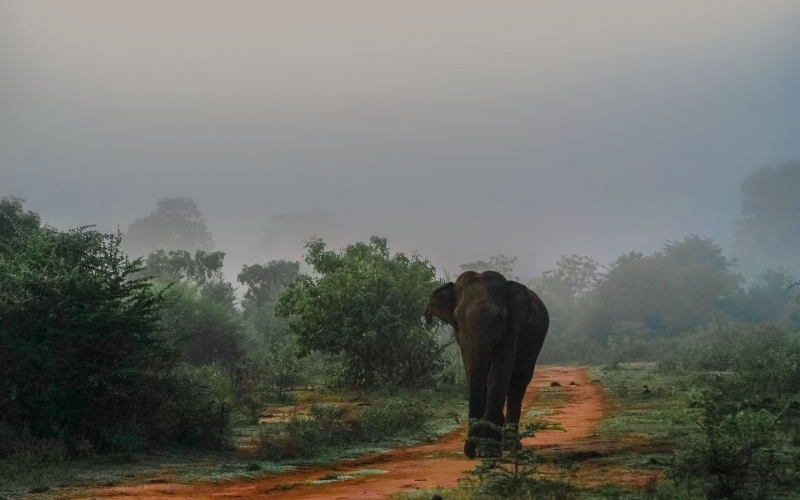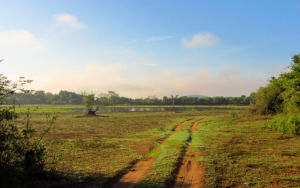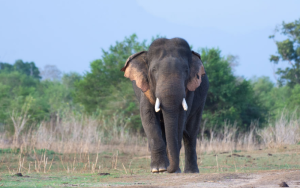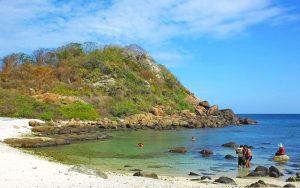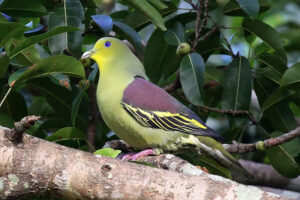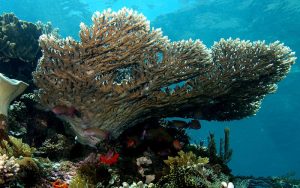Sri Lanka is a small island country located in the Indian Ocean, south of the Indian subcontinent. Despite its small size, it is one of the world’s biodiversity hotspots, with a diverse range of fauna and flora. Sri Lanka has a tropical climate, with rainforests, dry forests, and wetlands, which provide a range of habitats for various animals. In this blog post, we will explore the faunal diversity of Sri Lanka, including some of the unique and endangered species found on the island.
Mammals
Sri Lanka has 122 species of mammals, including 14 endemic species. Some of the notable mammals found in Sri Lanka are the Sri Lankan elephant, leopard, sloth bear, and fishing cat. The Sri Lankan elephant is the largest mammal in Sri Lanka and is considered an important cultural symbol. The leopard is the apex predator on the island, and it is found in all types of forests, from wet evergreen forests to dry deciduous forests. The sloth bear is another iconic species found in Sri Lanka, which feeds mainly on termites and honey. The fishing cat is a unique species found in the wetlands of Sri Lanka, and it is known for its ability to catch fish.
Birds
Sri Lanka is home to over 440 species of birds, of which 33 are endemic to the island. The Sri Lankan junglefowl, which is the national bird of Sri Lanka, is a colorful and attractive bird found in the country’s forests. Another unique bird species found in Sri Lanka is the Sri Lankan hanging parrot, which is known for its bright green color and its ability to hang upside down from branches. The Sri Lankan wood pigeon is another endemic bird species found in the country, which is known for its striking blue and green coloration.
Reptiles
Sri Lanka is famous for its diverse range of reptiles, including 171 species of snakes, of which 95 are endemic. Sri Lanka is home to several species of venomous snakes, including the cobra, krait, and viper. However, there are also many non-venomous snakes found in Sri Lanka, such as the rat snake, which is found in a range of habitats, from the lowlands to the hills. The green pit viper is another unique species found in Sri Lanka, which is known for its bright green coloration.
Amphibians
Sri Lanka has a rich diversity of amphibians, with 106 species found on the island. Of these, 90 species are endemic. The Kandyan dwarf toad is a unique and endangered species found in Sri Lanka, which is known for its small size and its bright orange coloration. The Sri Lankan tree frog is another species found in the country, which is known for its ability to change color depending on its surroundings.
Invertebrates
Sri Lanka is also home to a diverse range of invertebrates, including many endemic species. The Sri Lankan blue butterfly is a unique and beautiful species found in the country, which is known for its bright blue coloration. The Rhinoceros beetle is another iconic species found in Sri Lanka, which is known for its large size and its characteristic horn.
Conservation Efforts for Faunal Diversity in Sri Lanka
Due to its remarkable faunal diversity, Sri Lanka has established many conservation initiatives to protect its wildlife. The country has designated many protected areas, including national parks, nature reserves, and wildlife sanctuaries. These areas serve as critical habitats for a vast array of animals, from the tiny pygmy loris to the majestic elephant.
One of the most notable protected areas in Sri Lanka is the Sinharaja Forest Reserve, a UNESCO World Heritage Site. The Sinharaja forest is home to many endemic species, including the purple-faced langur, the Sri Lankan leopard, and the Sri Lankan junglefowl. The reserve is also an essential watershed, supplying water to many rivers and streams that feed into the island’s many reservoirs. Another important reserve is the Yala National Park, which is famous for its high density of leopards.
In addition to protected areas, Sri Lanka has several conservation organizations dedicated to preserving its biodiversity. One of these organizations is the Sri Lanka Wildlife Conservation Society, which works to conserve the island’s threatened wildlife species and their habitats. Another organization, Biodiversity Sri Lanka, focuses on promoting biodiversity conservation and sustainable use of natural resources.
The Government Involvement
The government of Sri Lanka has also implemented various policies and laws to safeguard its fauna. For example, hunting, killing, or capturing wild animals is prohibited under the Fauna and Flora Protection Ordinance. The Wildlife Conservation Department also conducts regular patrols and anti-poaching campaigns to ensure the safety of the animals in the protected areas.
However, despite these conservation efforts, Sri Lanka’s fauna still faces many threats. One of the most significant threats is habitat loss due to deforestation, urbanization, and agricultural expansion. This has led to the fragmentation of habitats, making it difficult for wildlife to move and mate freely. Invasive species, such as the water hyacinth and the giant African snail, also pose a threat to Sri Lanka’s native fauna.
Impact of Global Warming
Climate change is also a growing concern for Sri Lanka’s wildlife. The country is already experiencing the effects of global warming, including rising temperatures and changing rainfall patterns. This can affect the availability of food and water for animals and cause changes in their breeding and migration patterns.
Conclusion
In conclusion, Sri Lanka’s unique geographic location, climate, and geological history have contributed to its remarkable faunal diversity. However, the country’s biodiversity is threatened by a range of anthropogenic activities such as deforestation, habitat loss, hunting, and poaching. Conservation efforts, such as the establishment of protected areas, captive breeding programs, and public education, have been put in place to address these challenges. It is essential that these efforts are sustained and strengthened to ensure that Sri Lanka’s diverse wildlife continues to thrive for generations to come. By recognizing the value of this natural heritage and taking action to preserve it, we can protect not only the biodiversity of Sri Lanka but also the cultural and economic benefits that come with it.
Sri Lanka’s faunal diversity is a treasure trove of unique and fascinating animal species. While the country has made significant strides in protecting its wildlife through conservation initiatives, more needs to be done to address the threats to their survival. By continuing to prioritize conservation efforts and raising awareness about the importance of protecting Sri Lanka’s fauna, we can help ensure that these remarkable creatures continue to thrive for generations to come.

